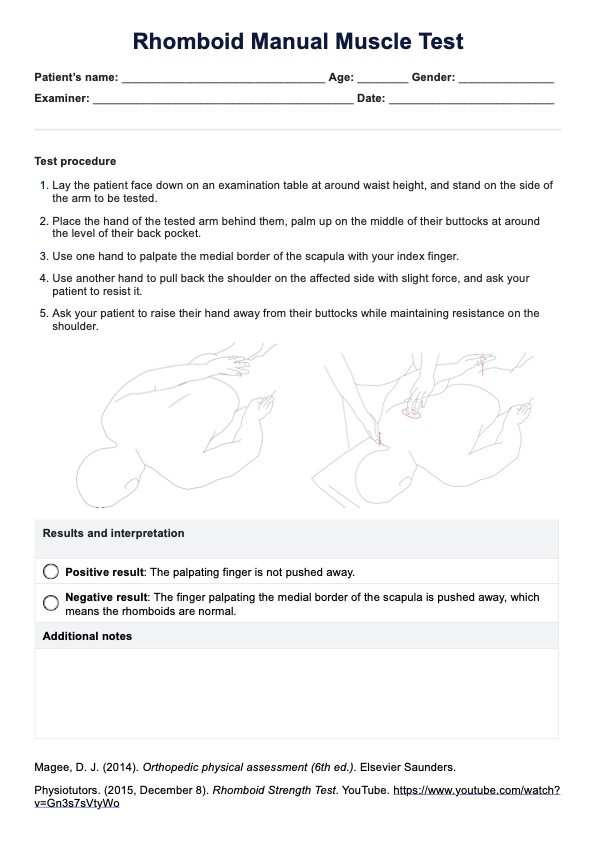The rhomboid manual muscle test is performed with the patient lying face down, where the examiner applies slight force to the shoulder while the patient resists by lifting their hand from the small of their back. This tests the strength and function of the rhomboid muscles.

Rhomboid Manual Muscle Test
Learn how to detect rhomboid muscle weakness by conducting the Rhomboid Manual Muscle Test.
Use Template
Rhomboid Manual Muscle Test Template
Commonly asked questions
A rhomboid strain is diagnosed through physical examination, including tests like the rhomboid manual muscle test, alongside patient history of pain or discomfort in the upper back. Imaging, such as MRI, may also be used to confirm the diagnosis.
The rhomboid muscles stabilize the scapula, retract it toward the spine, and help with movements such as pulling or rowing. They also support good posture by maintaining the position of the shoulder blades.
EHR and practice management software
Get started for free
*No credit card required
Free
$0/usd
Unlimited clients
Telehealth
1GB of storage
Client portal text
Automated billing and online payments











